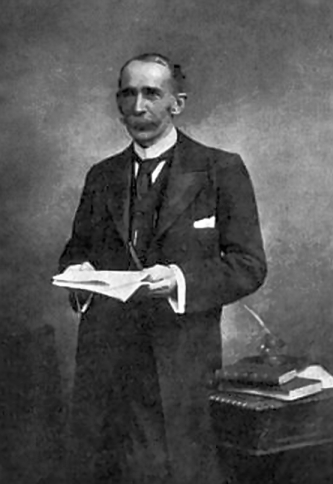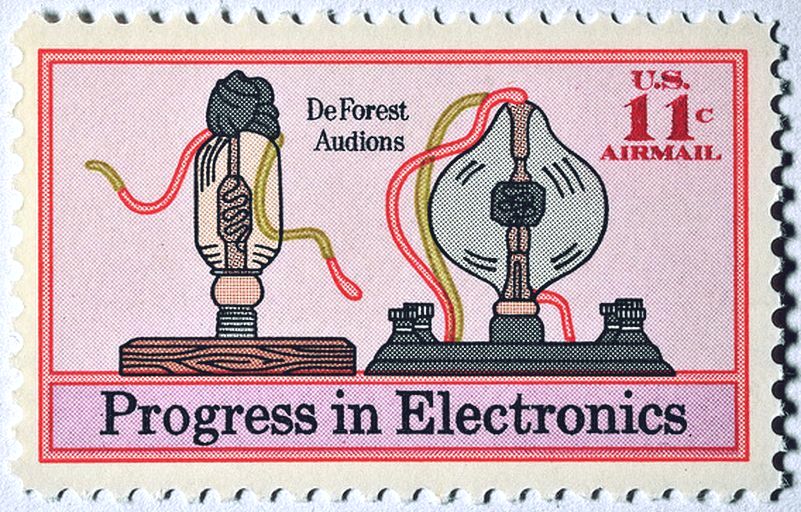|
Magnetic Detector
The magnetic detector or Marconi magnetic detector, sometimes called the "Maggie", was an early radio wave detector used in some of the first radio receivers to receive Morse code messages during the wireless telegraphy era around the turn of the 20th century. Developed in 1902 by radio pioneer Guglielmo Marconi from a method invented in 1895 by New Zealand physicist Ernest Rutherford it was used in Marconi wireless stations until around 1912, when it was superseded by vacuum tubes. It was widely used on ships because of its reliability and insensitivity to vibration. A magnetic detector was part of the wireless apparatus in the radio room of the RMS ''Titanic'' which was used to summon help during its famous 15 April 1912 sinking. copied on Stephenson's marconigraph.com personal website History The primitive spark gap radio transmitters used during the first three decades of radio (1886-1916) could not transmit audio (sound) and instead transmitted information by wir ... [...More Info...] [...Related Items...] OR: [Wikipedia] [Google] [Baidu] |
John Ambrose Fleming
Sir John Ambrose Fleming FRS (29 November 1849 – 18 April 1945) was an English electrical engineer and physicist who invented the first thermionic valve or vacuum tube, designed the radio transmitter with which the first transatlantic radio transmission was made, and also established the right-hand rule used in physics. He was the eldest of seven children of James Fleming DD (died 1879), a Congregational minister, and his wife Mary Ann, at Lancaster, Lancashire, and baptised on 11 February 1850. A devout Christian, he once preached at St Martin-in-the-Fields in London on evidence for the resurrection. In 1932, he and Douglas Dewar and Bernard Acworth helped establish the Evolution Protest Movement. Fleming bequeathed much of his estate to Christian charities, especially those for the poor. He was a noted photographer, painted watercolours, and enjoyed climbing the Alps. Early years Ambrose Fleming was born in Lancaster and educated at Lancaster Royal Grammar School, ... [...More Info...] [...Related Items...] OR: [Wikipedia] [Google] [Baidu] |
Horseshoe Magnet
A horseshoe magnet is a magnet made in the shape of a horseshoe or a U-shape and has become the most widely recognized symbol for magnets. It was invented by William Sturgeon in 1825. This type of magnet can be either a permanent magnet or an electromagnet. The main advantage of a horseshoe magnet over other types of magnets is that the magnetic poles are close together creating a much stronger magnetic field. History In 1819, it was discovered that passing electric current through a piece of metal deflected a compass needle. Following this discovery, many other experiments surrounding magnetism were attempted. These experiments culminated in William Sturgeon wrapping wire around a horseshoe-shaped piece of iron and running electric current through the wires creating the first horseshoe magnet. This was also the first practical electromagnet and the first magnet that could lift more mass than the magnet itself when the seven-ounce magnet was able to lift nine pounds of ir ... [...More Info...] [...Related Items...] OR: [Wikipedia] [Google] [Baidu] |
Sound
In physics, sound is a vibration that propagates as an acoustic wave, through a transmission medium such as a gas, liquid or solid. In human physiology and psychology, sound is the ''reception'' of such waves and their ''perception'' by the brain. Only acoustic waves that have frequencies lying between about 20 Hz and 20 kHz, the audio frequency range, elicit an auditory percept in humans. In air at atmospheric pressure, these represent sound waves with wavelengths of to . Sound waves above 20 kHz are known as ultrasound and are not audible to humans. Sound waves below 20 Hz are known as infrasound. Different animal species have varying hearing ranges. Acoustics Acoustics is the interdisciplinary science that deals with the study of mechanical waves in gasses, liquids, and solids including vibration, sound, ultrasound, and infrasound. A scientist who works in the field of acoustics is an ''acoustician'', while someone working in the field of acoustica ... [...More Info...] [...Related Items...] OR: [Wikipedia] [Google] [Baidu] |
Electrical Resistance
The electrical resistance of an object is a measure of its opposition to the flow of electric current. Its reciprocal quantity is , measuring the ease with which an electric current passes. Electrical resistance shares some conceptual parallels with mechanical friction. The SI unit of electrical resistance is the ohm (), while electrical conductance is measured in siemens (S) (formerly called the 'mho' and then represented by ). The resistance of an object depends in large part on the material it is made of. Objects made of electrical insulators like rubber tend to have very high resistance and low conductance, while objects made of electrical conductors like metals tend to have very low resistance and high conductance. This relationship is quantified by resistivity or conductivity. The nature of a material is not the only factor in resistance and conductance, however; it also depends on the size and shape of an object because these properties are extensive rather than intens ... [...More Info...] [...Related Items...] OR: [Wikipedia] [Google] [Baidu] |
Radio Frequency
Radio frequency (RF) is the oscillation rate of an alternating electric current or voltage or of a magnetic, electric or electromagnetic field or mechanical system in the frequency range from around to around . This is roughly between the upper limit of audio frequencies and the lower limit of infrared frequencies; these are the frequencies at which energy from an oscillating current can radiate off a conductor into space as radio waves. Different sources specify different upper and lower bounds for the frequency range. Electric current Electric currents that oscillate at radio frequencies (RF currents) have special properties not shared by direct current or lower audio frequency alternating current, such as the 50 or 60 Hz current used in electrical power distribution. * Energy from RF currents in conductors can radiate into space as electromagnetic waves ( radio waves). This is the basis of radio technology. * RF current does not penetrate deeply into electrical c ... [...More Info...] [...Related Items...] OR: [Wikipedia] [Google] [Baidu] |
Copper
Copper is a chemical element with the symbol Cu (from la, cuprum) and atomic number 29. It is a soft, malleable, and ductile metal with very high thermal and electrical conductivity. A freshly exposed surface of pure copper has a pinkish-orange color. Copper is used as a conductor of heat and electricity, as a building material, and as a constituent of various metal alloys, such as sterling silver used in jewelry, cupronickel used to make marine hardware and coins, and constantan used in strain gauges and thermocouples for temperature measurement. Copper is one of the few metals that can occur in nature in a directly usable metallic form ( native metals). This led to very early human use in several regions, from circa 8000 BC. Thousands of years later, it was the first metal to be smelted from sulfide ores, circa 5000 BC; the first metal to be cast into a shape in a mold, c. 4000 BC; and the first metal to be purposely alloyed with another metal, tin, to create ... [...More Info...] [...Related Items...] OR: [Wikipedia] [Google] [Baidu] |
Clockwork
Clockwork refers to the inner workings of either mechanical devices called clocks and watches (where it is also called the movement) or other mechanisms that work similarly, using a series of gears driven by a spring or weight. A clockwork mechanism is often powered by a clockwork motor, description of the clockwork motor in an antique phonograph consisting of a mainspring, a spiral torsion spring of metal ribbon. Energy is stored in the mainspring manually by ''winding it up'', turning a key attached to a ratchet which twists the mainspring tighter. Then the force of the mainspring turns the clockwork gears, until the stored energy is used up. The adjectives ''wind-up'' and ''spring-powered'' refer to mainspring-powered clockwork devices, which include clocks and watches, kitchen timers, music boxes, and wind-up toys. History The earliest known example of a clockwork mechanism is the Antikythera mechanism, a first-century BC geared analogue computer, somewhat astrolabe-li ... [...More Info...] [...Related Items...] OR: [Wikipedia] [Google] [Baidu] |
Wire
Overhead power cabling. The conductor consists of seven strands of steel (centre, high tensile strength), surrounded by four outer layers of aluminium (high conductivity). Sample diameter 40 mm A wire is a flexible strand of metal. Wire is commonly formed by drawing the metal through a hole in a die or draw plate. Wire gauges come in various standard sizes, as expressed in terms of a gauge number. Wires are used to bear mechanical loads, often in the form of wire rope. In electricity and telecommunications signals, a "wire" can refer to an electrical cable, which can contain a "solid core" of a single wire or separate strands in stranded or braided forms. Usually cylindrical in geometry, wire can also be made in square, hexagonal, flattened rectangular, or other cross-sections, either for decorative purposes, or for technical purposes such as high-efficiency voice coils in loudspeakers. Edge-wound coil springs, such as the Slinky toy, are made of special flatten ... [...More Info...] [...Related Items...] OR: [Wikipedia] [Google] [Baidu] |
Iron
Iron () is a chemical element with symbol Fe (from la, ferrum) and atomic number 26. It is a metal that belongs to the first transition series and group 8 of the periodic table. It is, by mass, the most common element on Earth, right in front of oxygen (32.1% and 30.1%, respectively), forming much of Earth's outer and inner core. It is the fourth most common element in the Earth's crust. In its metallic state, iron is rare in the Earth's crust, limited mainly to deposition by meteorites. Iron ores, by contrast, are among the most abundant in the Earth's crust, although extracting usable metal from them requires kilns or furnaces capable of reaching or higher, about higher than that required to smelt copper. Humans started to master that process in Eurasia during the 2nd millennium BCE and the use of iron tools and weapons began to displace copper alloys, in some regions, only around 1200 BCE. That event is considered the transition from the Bronze Age to the Iron A ... [...More Info...] [...Related Items...] OR: [Wikipedia] [Google] [Baidu] |
Audion
The Audion was an electronic detecting or amplifying vacuum tube invented by American electrical engineer Lee de Forest in 1906.De Forest patented a number of variations of his detector tubes starting in 1906. The patent that most clearly covers the Audion is , Space Telegraphy', filed January 29, 1907, issued February 18, 1908 The link is to a reprint of the paper in the ''Scientific American Supplement'', Nos. 1665 and 1666, November 30, 1907 and December 7, 1907, p.348-350 and 354-356. It was the first triode, consisting of an evacuated glass tube containing three electrodes: a heated filament, a grid, and a plate. It is important in the history of technology because it was the first widely used electronic device which could amplify. A low power signal at the grid could control much more power in the plate circuit. Audions had more residual gas than later vacuum tubes; the residual gas limited the dynamic range and gave the Audion non-linear characteristics and erratic per ... [...More Info...] [...Related Items...] OR: [Wikipedia] [Google] [Baidu] |
.jpg)



.jpg)
